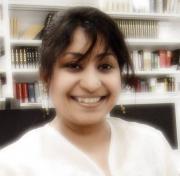Professor Tania Hossain is a Professor of Sociolinguistics at Waseda University, Tokyo, Japan. She served as an Assistant Dean of Waseda University of the same university. She completed her doctorate from International Christian University, Tokyo. Prior to coming to Tokyo, she completed her B.A. (Hons) and M.A. from the University of Dhaka. She teaches sociolinguistics, the cultural heritage of South Asia, and so on. Her research focuses on policy studies. She is on the editorial board of several journals. She has published over ten books and 40 articles and attended over 60 conferences worldwide. Her primary research interests are language policy and applied linguistics (especially language education) in multilingual contexts. Four central themes of her research are:
The links between language policy and other areas of social policy.
The impact of language policies in education.
The central role of language in education.
English as an international language.
Her current projects include:
A chapter on critical approaches to language policy studies.
An article on language and the politics of ethnicity and minority languages.
She has also contributed to encyclopedias and several handbooks. As a multilingual person, Professor Hossain's appreciation for linguistic diversity is evident in her work, fostering a sense of connection and appreciation among her audience. Along with teaching, she works as an interpreter and translator nationally and globally. She is a born traveler, having traveled to more than 100 countries. She is also a novelist, a travel writer, and a poet. Her most recent work has focused on minority language rights and language policies.


Click to view the Scopus page. The data was downloaded from Scopus API in January 09, 2026, via http://api.elsevier.com and http://www.scopus.com .